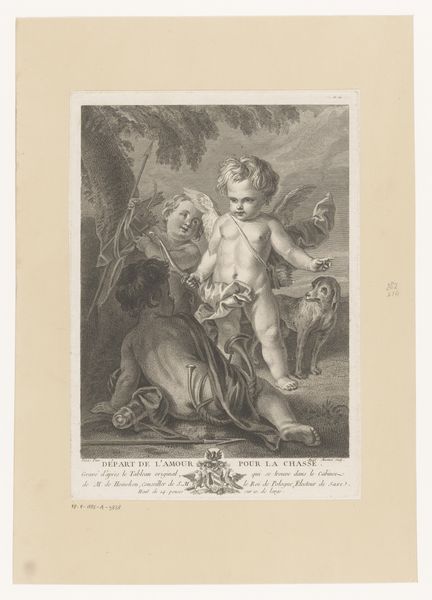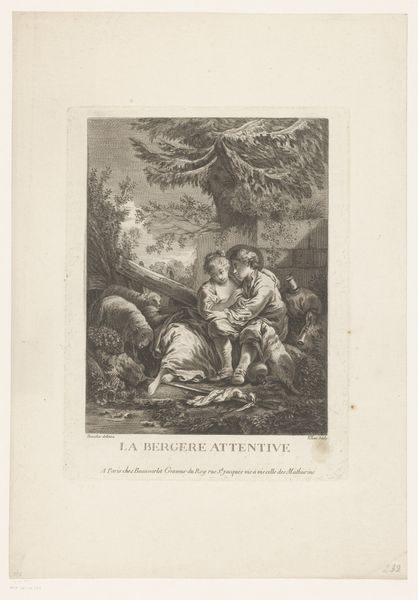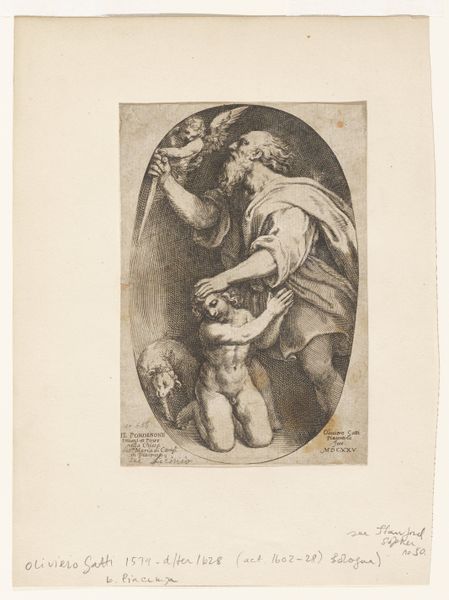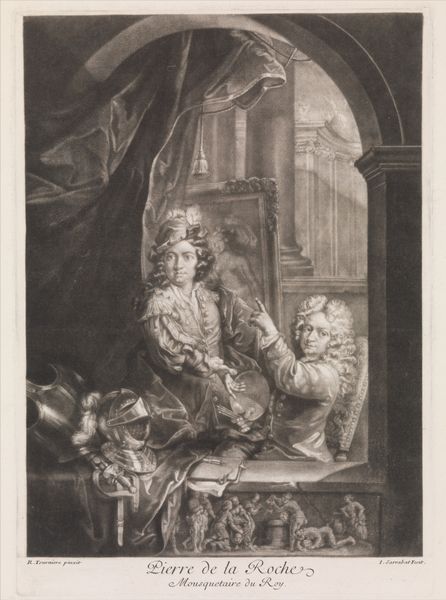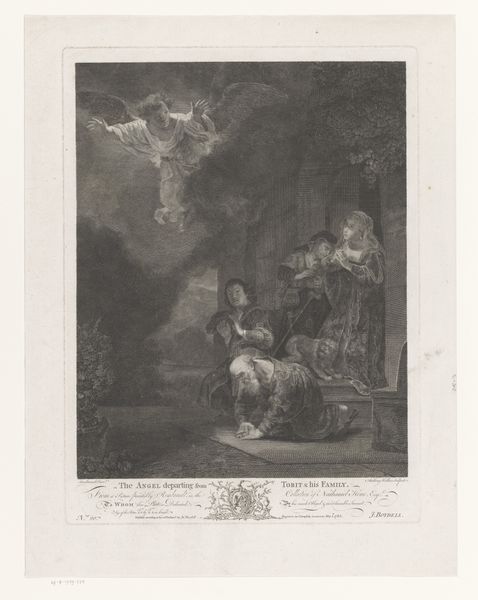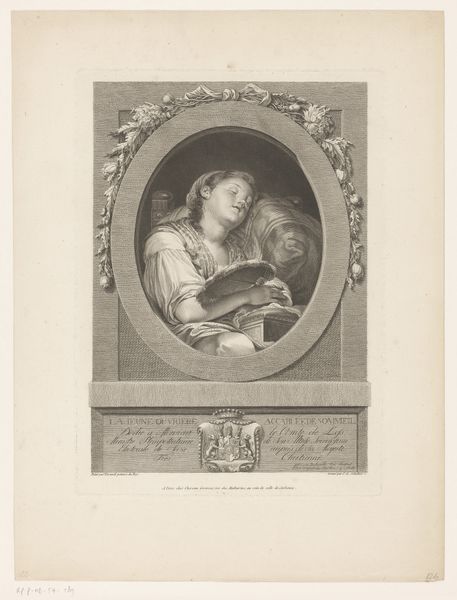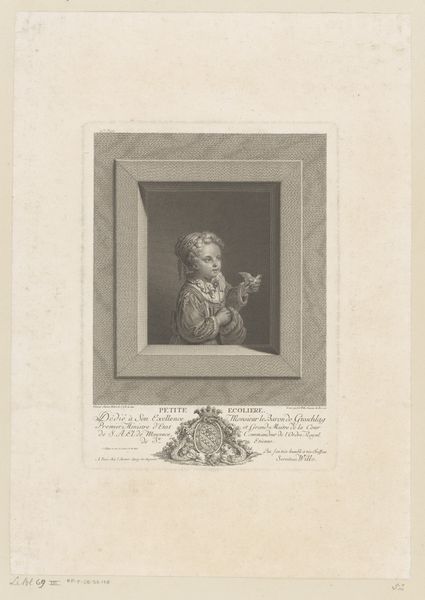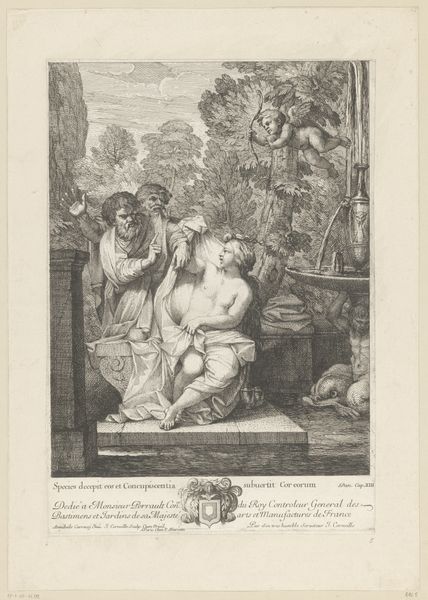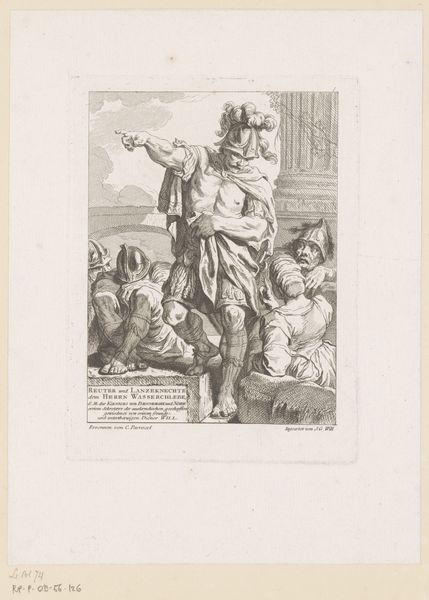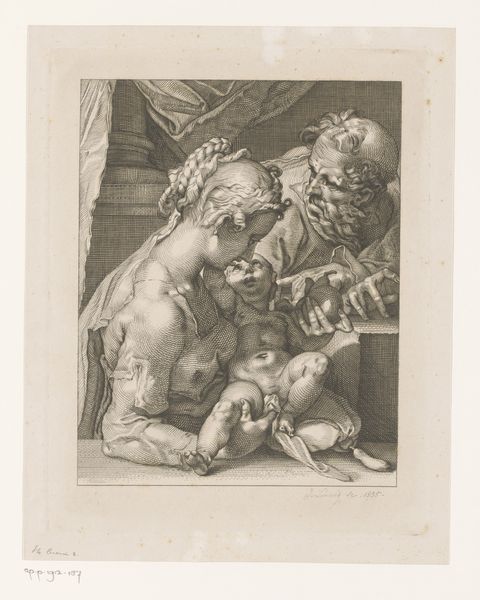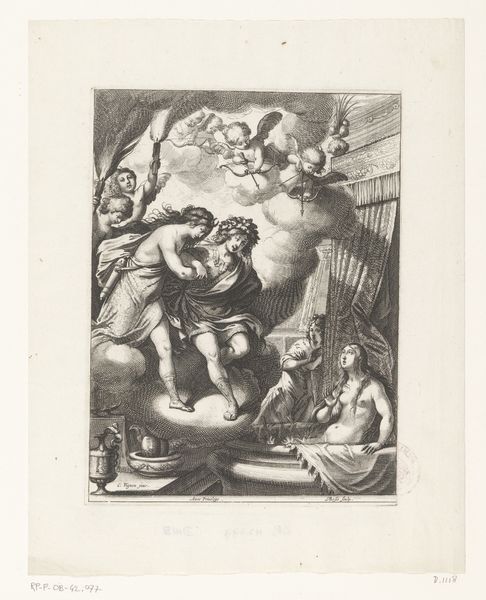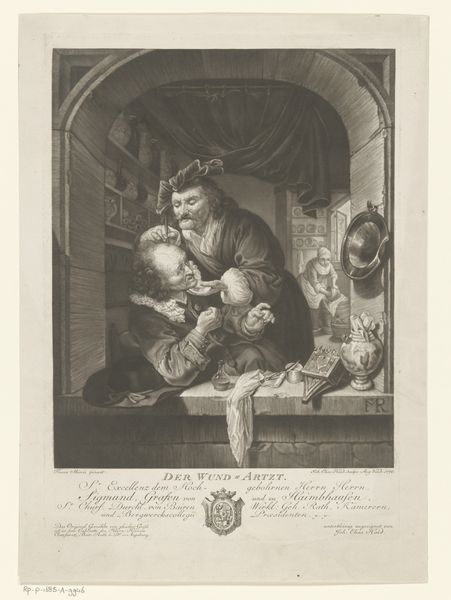
Dimensions: height 445 mm, width 356 mm
Copyright: Rijks Museum: Open Domain
Editor: This is Robert Strange’s 1775 engraving, "Laomedon, King of Troy, Discovered by Neptune and Apollo." The texture and contrast created with the engraving are striking. It almost feels theatrical. What aspects of the print catch your eye? Curator: Focusing on the composition, notice how the artist uses the frame within the frame. The characters are closely packed, their placement creating an almost claustrophobic atmosphere, intensifying the drama of the scene. The artist guides your eye through the strategic placement of figures. Observe the interplay between light and shadow, how it sculpts the forms, emphasizing the muscularity of Neptune and the more delicate features of Apollo. Do you see how the engraver uses line to create a sense of depth? Editor: Yes, the varying line weights really define the forms. Is there a specific symbolic reason behind such choices, or are they purely formal? Curator: We see here, the line is employed less for overt symbolism, and more for structuring the image and creating tonal variations. How do the balanced forms affect your interpretation of the narrative? Editor: Well, it certainly elevates the ordinary. It brings an eternal quality. Curator: Indeed. By carefully orchestrating the visual elements, Strange moves beyond simple storytelling, inviting contemplation on themes of power, duty, and consequence. What is your impression now? Editor: Looking at the relationship between form and content, I have an enhanced understanding of how technical artistry deepens thematic complexity. Curator: Precisely, and that close examination enhances appreciation.
Comments
No comments
Be the first to comment and join the conversation on the ultimate creative platform.
